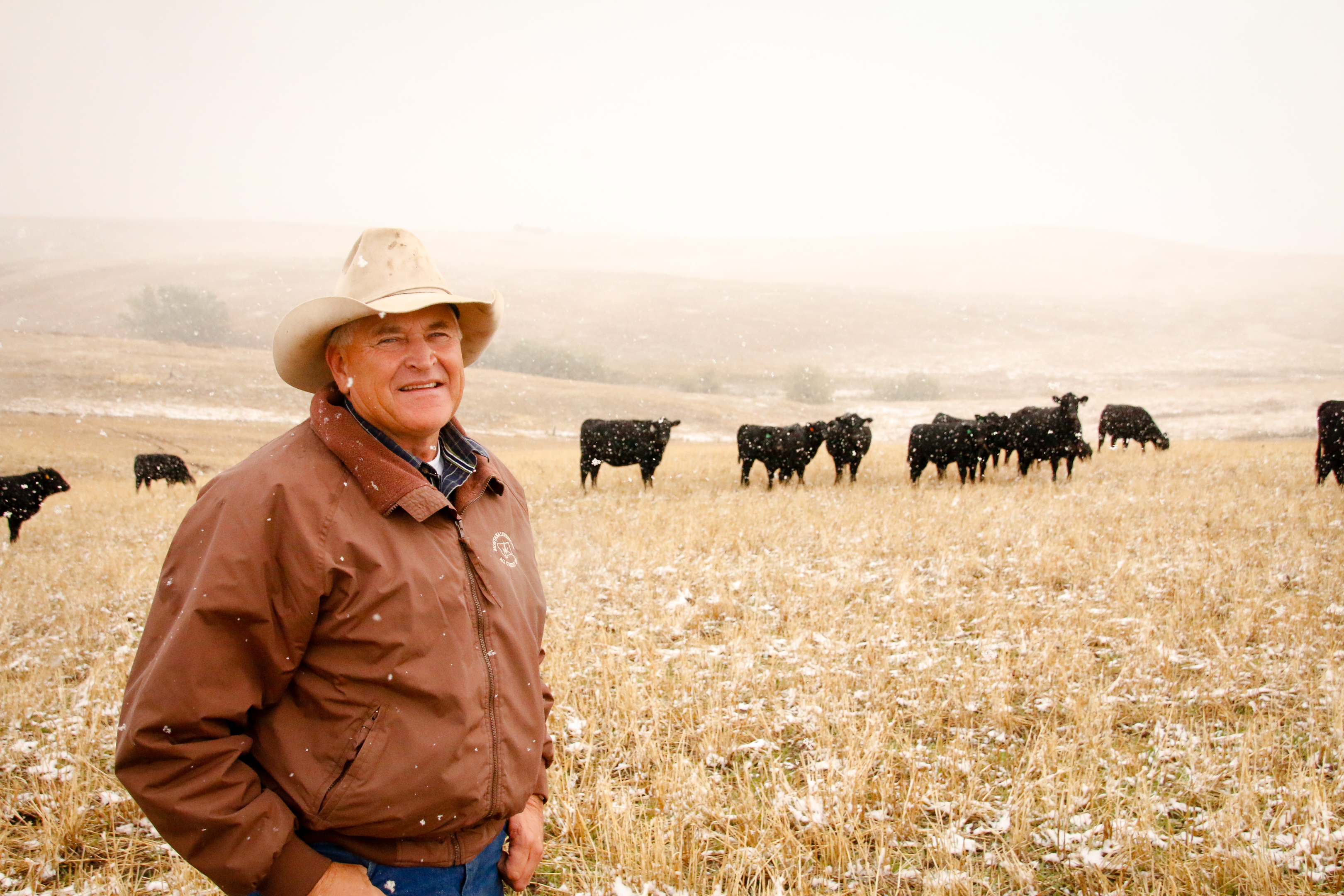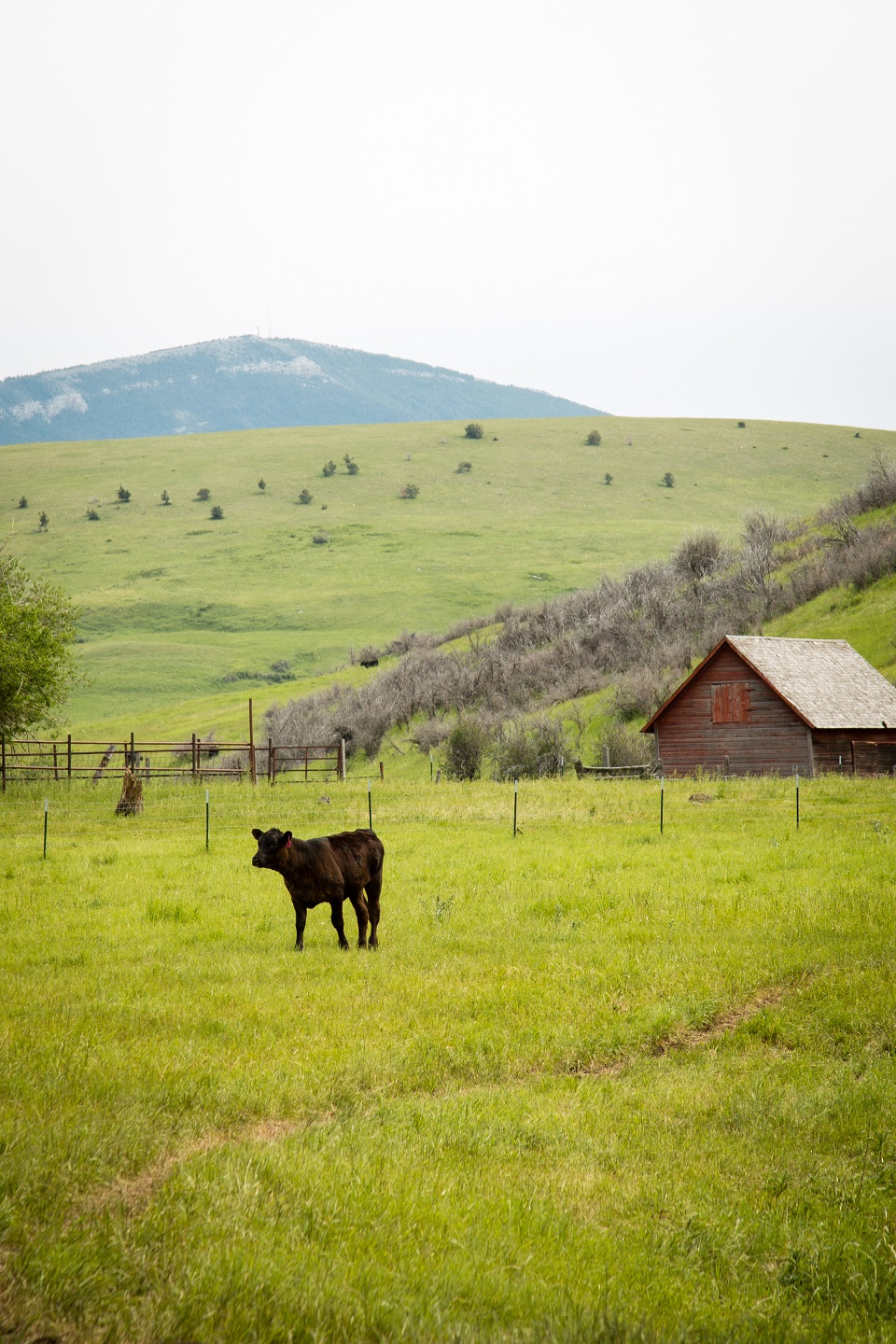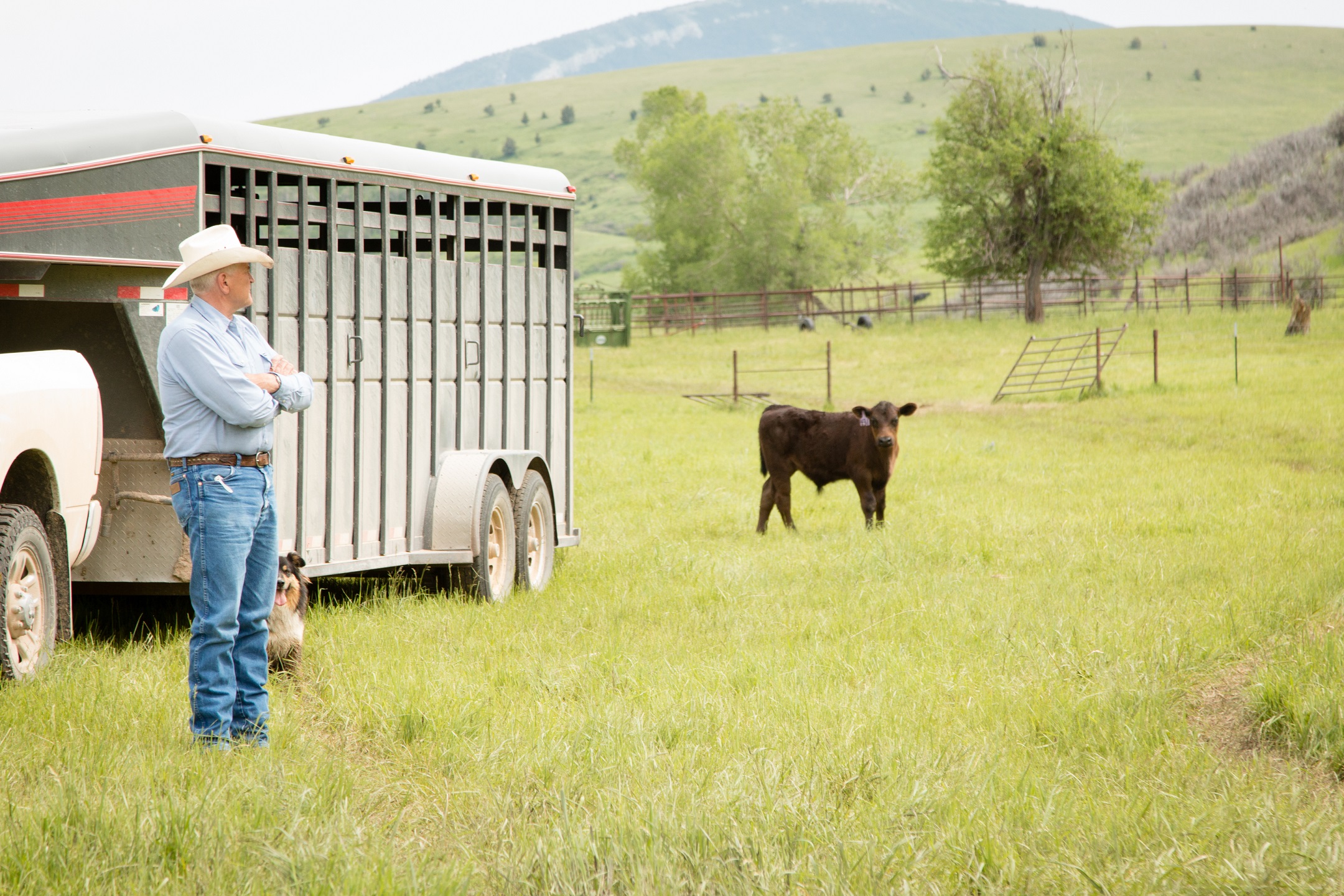
Trade-offs, but never satisfied

Snow in September brought moisture that easily trumped any ideals of a long Indian Summer or an idyllic fall.
“We didn’t have a drop of rain starting the 15th of June, and so much hot weather this summer, you couldn’t find green anywhere,” Bruce Keaster says. “The dogs were kicking up dust it was so dry.”
They were fortunate, Bruce says: Just one fire two miles west of them that burned 500 acres was pretty darn good in a season marked by more than 1 million acres burning in Montana—and a full month of smoke so thick, most of the state registered unhealthy air quality for days or even weeks at a time.

Gathering this year’s calf crop off the parched land to precondition, he’s been pleasantly surprised. Little to no respiratory issues from the smoke and so far, weaning weights are right on track. That’s the resiliency and performance he and long-time feeding partner Ryan Loseke depend on.
As they prepare to ship the 2017 calves, they review the 2016 crop we began following almost exactly a year ago.
“They’re just solid, stout cattle that gain well, convert well,” Ryan says. “These would be really fun cattle to feed until July.”
But market pressure can take the “for fun” right out of feeding cattle.
“The market was sliding; it was telling us that the first week of May and April was the time to sell them,” Ryan says.
While he aims to finish at 1,400 lbs. at 14 months of age, the May-harvested calves were averaging 1,375 at 13.5 months, converting at an impressive rate in the high fives, in pounds of dry matter to a pound of beef. The first set of steers, harvested in mid-April, graded 81% Choice, with 23% meeting carcass specifications for the Certified Angus Beef ® (CAB®) brand.
They could have been 1,475 lb. two months later, and would have expressed more of their genetic potential to marble, the feeder noted, but it was a marketing trade-off he had to make.

Just a couple weeks later, when the next load went to harvest, they sacrificed less. With a bit more finish, they stepped up to more than 90% Choice, 39% CAB and 2% Prime.
“At 180 days on feed, I think it’s pretty hard to see more Primes than that,” Ryan says, adding that the shortened feeding window and aggressive implant strategy suppressed marbling.
“Performance has always been my No. 1 priority in bull selection, and I’m happy with where we are on that. It’s in there,” Bruce says.
A few years ago, he did a HD50K DNA test to get an idea of how years of studying EPDs were playing out on unproven bull calves. While it confirmed his exacting focus in many areas, he found marbling potential to be about average: “That was a bit of a disappointment that it wasn’t better, but that’s how you learn,” he says. “So, from where we were a few year ago on the carcass, that 40%, that’s an improvement.”
This year, he’ll HD50K the latest generation to check progress.

“I don’t know if I’ll see the day where everything is CAB, but we’re working on it, that’s for sure,” Bruce says. “I’m happy they did as well as they did, but I’m never satisfied. Ryan said the health was really good, I’m always glad to hear that. They gained well – that’s great. But I’m not satisfied, because I know we can be better.”
Of course, that’s the spirit that has made this past year of “Following the Calves” so fun for me from behind the camera and keyboard, and I hope, for you, the reader, too.
I thanked him for his time and willingness to open up the ranch and his family to all of us, and Bruce returned the gratitude: “Your questions have kept me thinking, made me examine these things even more, kept me questioning.”
I think back to my first interview with Ryan, where he noted Bruce’s questions and interest in how his calves did after the ranch as one of the characteristics that made being in business with him so much fun, too.
Those questions we ask ourselves and others, in the search for answers, we trade our complacency or the comfort of “status quo” for continual improvement. Thanks for following along this year, and until next time… keep questioning.
-Laura
P.S. – If you want to read all of the Keaster family’s story, catch up on the ‘Following the Calves’ posts: Maternal instincts, predictable cattle; Keaster family checks in, Friends and neighbors 1,000 miles away.
And travel to the Hadrick ranch in South Dakota, too!
—
Laura Nelson is based in Big Timber, Montana, where she writes, captures images and tells farming and ranching stories. She’s a former CAB Industry Information Specialist who became passionate about the brand and the pursuit of high-quality beef while working at the company headquarters in Ohio. Then wide open spaces, small-town living and those beautiful Crazy Mountains woo’d her back west.
You may also like
Progress from small steps
Every day is a chance to learn and get better. Thousands of others like my new friends in Alabama are taking steps to meet the shifts in consumer demand, and to know more. Small steps in the right direction can start now. Even if it’s just recording a snapshot of where you are today, a benchmark for tomorrow.
Not perfect, but working to get better
The CAB Cattleman Connection team heard its name called more than once in the virtual ceremonies, and each time came a sense of personal accomplishment, but even better: confirmation that we’re getting better at our craft. I hope that means we’re doing a better job for you.
Beefed up findings
Frank Mitloehner presents his findings on the animal ag sector’s impact on global warming. He explains how cattle counterbalance other fossil fuel sectors, proving that cattle are a solution and not a threat.




